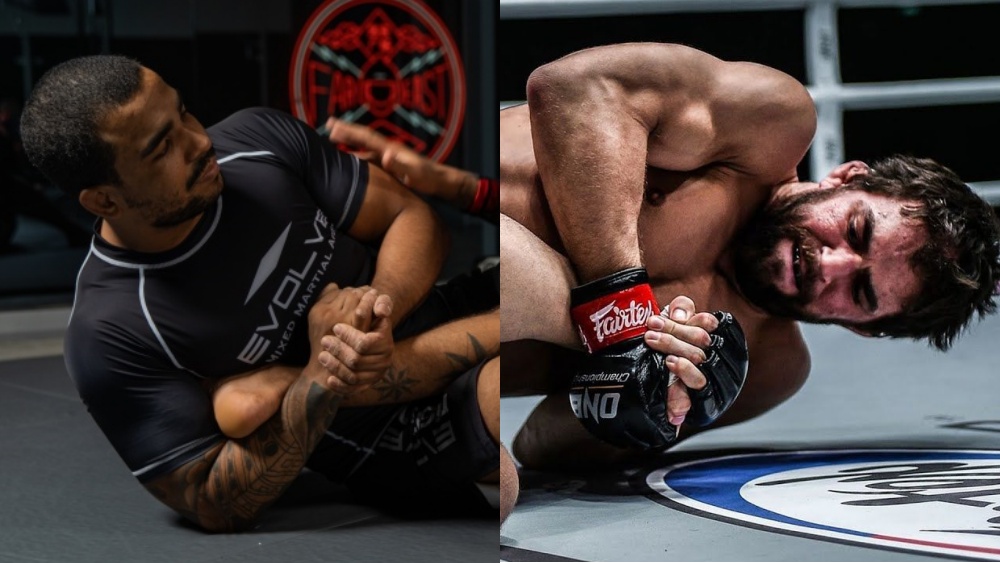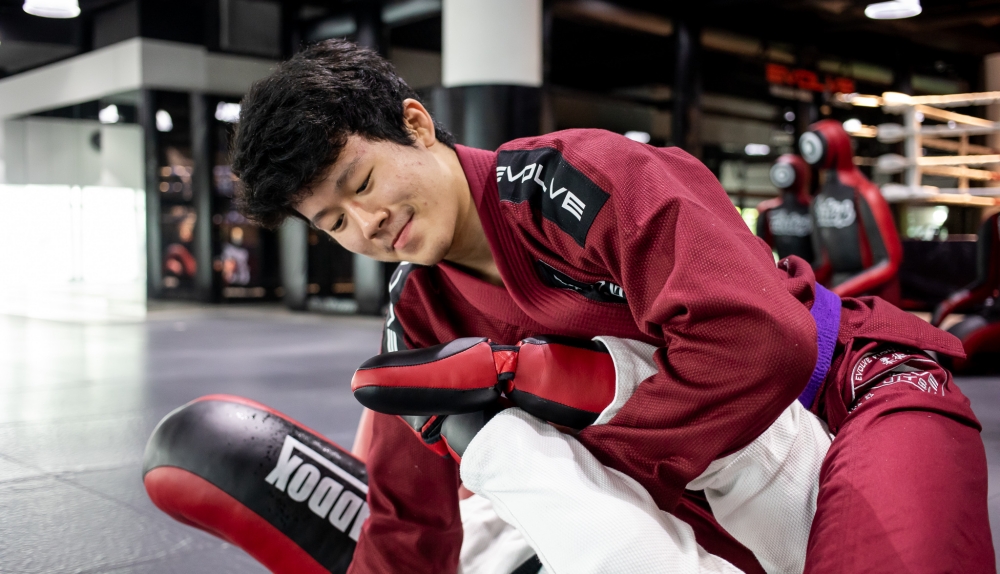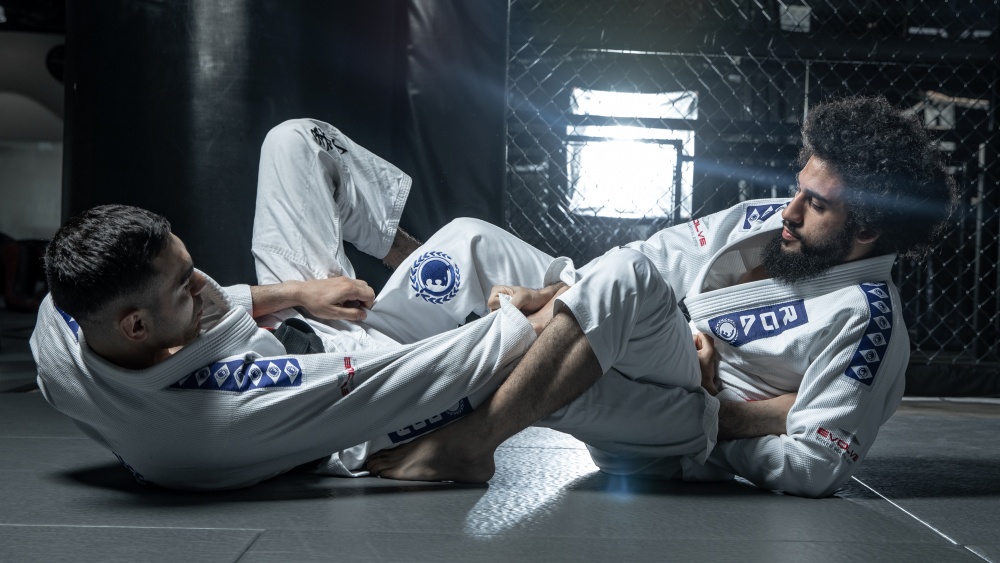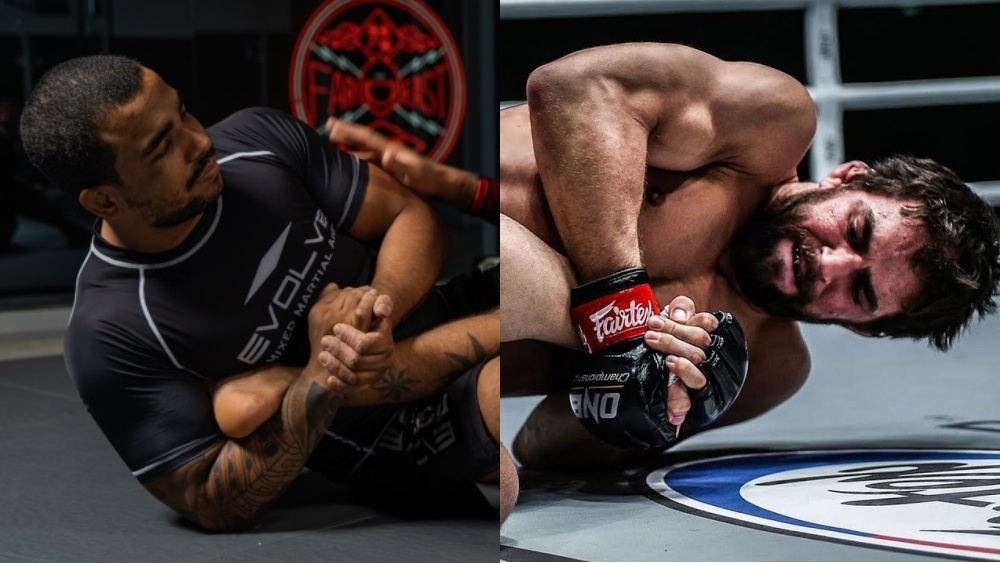How To Use the Gable Grip in BJJ & MMA

Guest post by Evolve MMA, Asia’s premier championship brand for martial arts with the most number of World Champions on the planet. Named as the #1 ranked martial arts organization in Asia by CNN, Yahoo! Sports, FOX Sports, and more, Evolve MMA is the best gym to learn MMA in Singapore.
As you delve into the grappling world of Brazilian Jiu-Jitsu (BJJ) and Mixed Martial Arts (MMA), you’ll find the Gable Grip (also known as the Gable Clasp) to be an invaluable tool in your arsenal.
Named after the legendary wrestler Dan Gable, this grip is a powerful way to control opponents, and when applied correctly, it can be the foundation you use to execute a variety of techniques. Understanding how to properly employ the gable grip will enhance your grappling game, giving you an edge on the mat or in the cage.
Understanding The Gable Grip
The gable grip is a palm-to-palm grip, where your fingers are not interlocked but rather placed over the back of your opposite hand, with thumbs flat alongside each other or wrapped around the wrist for reinforcement. This grip is admired for its strength and the minimal exertion of energy required to maintain it.
This versatile grip is not flashy, but its utility is vast. Use the gable grip in BJJ and MMA for control in various positions such as side control, during takedowns, when passing the guard, or in defensive situations.
Forming The Grip
To form a gable grip, follow these steps:
- Bring your palms together, one hand facing down and the other facing up.
- Lay the fingers of both hands flat against the back of the opposite hand, just below the knuckles.
- Ensure your thumbs are flat against your hands or wrapped around the wrist, whatever provides you with the most control.
Some of the best times to use a gable grip in mixed martial arts and Brazilian Jiu-Jitsu include:
1) When Executing Takedowns
The gable grip can be a game-changer when shooting for takedowns. Once you’ve secured your arms around your opponent’s legs while shooting for a takedown, apply the gable grip to lock your arms and prevent your opponent from sprawling away.
The leverage this grip provides prevents your opponent from spreading their feet apart, limiting their ability to sprawl or counter and giving you better control as you drive through for the takedown.
2) To Enhance Control
The gable grip can help you maintain dominance when you’ve passed your opponent’s guard and established side control. Use the grip to clasp your hands together behind your opponent’s back or around their neck and arm to prevent them from framing and escaping. The compact nature of the grip makes it difficult for your opponent to break your clasp.
3) For Defense And Escapes
The gable grip is not only an offensive technique. You can use the grip to control one of your opponent’s arms if you find yourself in a precarious position, such as having your back taken, preventing them from fully applying chokes or armlocks.
It’s also an effective way to prevent your opponent from posturing up and raining down hell on you if you find your back on the match. You can wrap your opponent up with a gable grip and prevent them from getting any offense off.
MMA rules require the fighter on top to stay busy to prevent the referee from standing the fight off so use that to your advantage. If your sweeps and reversals aren’t working, wrap your opponent up with a gable grip and force the referee to reset the fight. Check out UFC’s Paddy Pimblett demonstrating how to take the back from the bottom closed guard using the gable grip in the above video.
4) To Set Up Submissions And Transitions
The gable grip is excellent for submissions like the short choke and arm triangle choke. Once you’ve trapped your opponent’s arm and head with your arm, use the gable grip to secure the position tightly, allowing you to focus on repositioning your body to finalize the choke without having to worry about maintaining hand control.
5) To Maintain Top Mount
Your opponent will likely try to buck and roll to escape when you secure the top mount position, but the gable grip can throw a wrench in their plans. Securing a Gable Grip around your opponent’s torso or arms can help you maintain your position and adjust to their movements without losing control.
6) To Hold On to Opponents During Transitions
Tyler Maguire employing the gable grip against Agilan Thani in their MMA bout at ONE Championship.
Another cool thing about the gable grip is its ability to transition seamlessly with your movements. You can adjust the grip accordingly as you flow from one position to the next, ensuring that you never lose control of your opponent. It’s an effective way to prevent opponents from scrambling away from you during transitions.
Strength And Conditioning For The Gable Grip
While technique is paramount, the effectiveness of your gable grip also depends on your hand and forearm strength. Incorporate grip-specific exercises into your strength and conditioning routine to make your Gable Grip even more formidable. These exercises will also help you to develop Popeye-style muscles on your forearms.
Make It A Part Of Your Grappling Arsenal
To be able to effectively utilize the gable grip, Some of the things you can do to improve your ability to use the gable grip include:
Drill For Perfection

Like any skill, the Gable Grip requires practice. Regularly drill positions and transitions where the grip is utilized. Focus on the nuances of the grip, such as thumb placement and the tightness of your clasp, to discover what works best for you. The Gable Grip is effective at all levels of mixed martial arts and Brazilian Jiu-Jitsu so get comfortable with it. Understanding the nuances of the grip will also make it easier for you to break it when opponents try to use it on you.
Live Sparring Application

You can’t fully appreciate the effectiveness of the Gable Grip without testing it in live sparring. Engage in rolling sessions to use the grip as often as possible. Please take note of when it works, when it fails, and why. This real-time feedback is crucial in honing the technique. If you find your grip is often compromised or you’re struggling to maintain it, reassess your technique. Ensure your hand placement is correct, your clasp is tight, and your arms are engaged.
Learn From The Best

Study high-level practitioners who use the Gable Grip effectively. Watch matches and instructional videos, and if possible, attend seminars. Learning from those who excel at using the grip can provide you with insights and nuances that you may not discover on your own.






